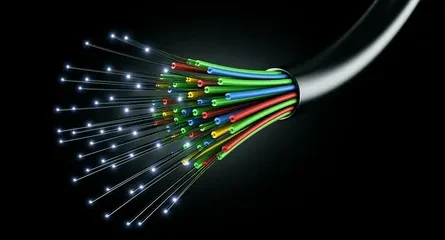Printed Electronics Technology
Printed electronics uses specialized ink made with electrically-conductive materials to create electronic components through printing techniques like screen, flexographic and inkjet printing. These conductive inks are formulated with metals, semi-metals or conductive polymers which behave like ink but conduct electricity after curing or drying. Unlike silicon-based electronics which require rigid PCBs and integrated circuits, printed electronics can be produced on thin, flexible plastic substrates using high-volume, low-cost printing technologies. This allows for lightweight, low-profile, durable and low-cost electronics.
Applications of Printed Electronics
Displays
One promising area for Printed Electronics is in large, flexible displays. Screen printing can deposit the semiconductors, insulators and electrodes needed for displays on lightweight plastic sheets. This enables the manufacture of curved, rollable displays for wearables, furniture or vehicle interiors. Companies like Samsung and LG are using printing to make cheaper, more durable OLED and quantum dot LED displays.
Sensors
Printed sensors provide a cheap, versatile way to add sensing capabilities. Piezoresistive printed strain sensors can be embedded in fabrics for interactive apparel. Printed pH, gas or biosensors allow for applications in healthcare monitoring, environmental testing and food quality control. Energy harvesters using solar cells or thermoelectric printed materials can power small sensors for the IoT.
Photovoltaics
Printing makes it possible to produce solar cells and modules on flexible plastic or steel substrates on a large scale. Companies use printing methods to deposit the semiconducting active materials and electrodes on photovoltaic cells to lower costs compared to crystalline silicon cells. Emerging technologies like dye-sensitized, organic and perovskite solar cells are especially well-suited for printing.
RFID Tags and Wireless Systems
RFID tags can be printed on plastic-based substrates instead of etched silicon wafers. Conductive inks form the antenna and chip pads. Some printed RFID tags achieve read ranges over 10 meters. Inkjets can also deposit the passive components for Bluetooth and WiFi circuits enabling printed wireless modules and sensors.
Advantages of Printed Electronics
Affordability
Being an additive manufacturing process, printing wastes very little material. It’s also a higher volume, faster and continuous process compared to traditional chip fabrication. These attributes together with flexibility in substrate choices lower electronics manufacturing costs by 10-100x, enabling uses in low-cost applications.
Design freedom
Printing decouples electronics fabrication from fixed silicon chip layouts allowing for designs better optimized for diverse shapes and applications. Curved, stretchable and even three-dimensional printed circuits are possible; so forms can follow electronic functions.
Sustainability
Printed electronics offers environmental benefits over traditional electronics. They employ fewer toxic chemicals in inks and processing compared to etching semiconductors. Flexible plastic substrates are also lightweight and may facilitate repair/upgrade of components for extending product lifetimes.
Challenges with Printed Electronics
Performance limitations
While improving rapidly, printed electronics currently lags behind silicon in aspects like operating speed, circuit density and maximum component temperatures. Progress is still needed in high-resolution printing, developing inks for active semiconductor materials, and component miniaturization for matching performance of silicon chips.
Manufacturing challenges
Ensuring consistent, defect-free printing over large areas at high throughput remains a challenge, as does aging and environmental stability of printed electronic materials and interfaces. Standardized manufacturing processes and quality control also needs refining to satisfy demands of mass production.
Intellectual property
The ecosystem of materials, equipment and processing know-how remains fragmented among early-stage startups. Increased collaborations between academia, SMEs and multinationals are essential for advancing standards, enabling technology transfer from lab to factories, and establishing best practices for IP protection.
Outlook for Printed Electronics
Market potential
Major revenues will come from established segments like displays and photovoltaics where printing offers significant cost benefits. Sensors, smart labels and radio frequency applications also present opportunities.
Technology maturation
Performance of printed devices continues enhancing through new functional inks, multi-layer structures, nano/micro-scale features and integration of actives. Hybrid manufacturing combining printing with conventional processes helps leveraging their respective advantages. This progress coupled with new potential foundry partners should expand the scope of printed electronics.
Adoption drivers
The pandemic has accelerated digitization and remote monitoring trends driving use of smart Internet-connected devices. Combined with sustainability mandates and consumer demand for flexible/wearable tech, these megatrends will propel further commercialization of printed sensors, displays, energy harvesters and wireless units in applications from packaging to healthcare. Overall, printed electronics is poised to substantially impact future electronics industry.
*Note:
1. Source: Coherent Market Insights, Public sources, Desk research
2. We have leveraged AI tools to mine information and compile it



